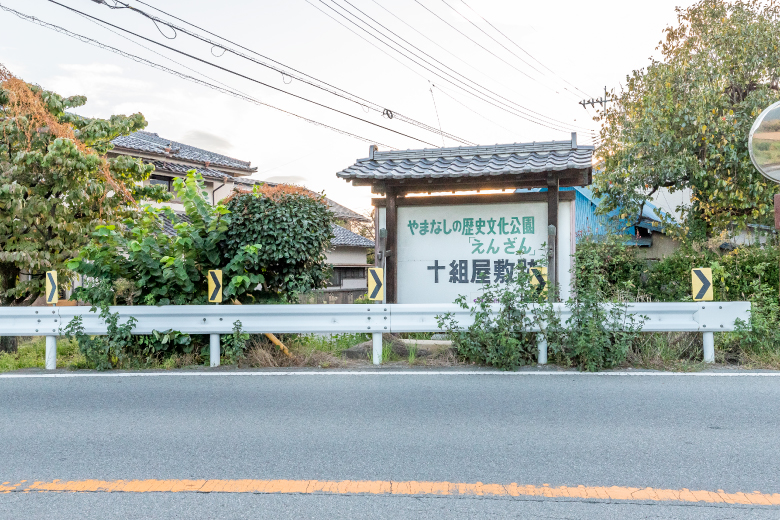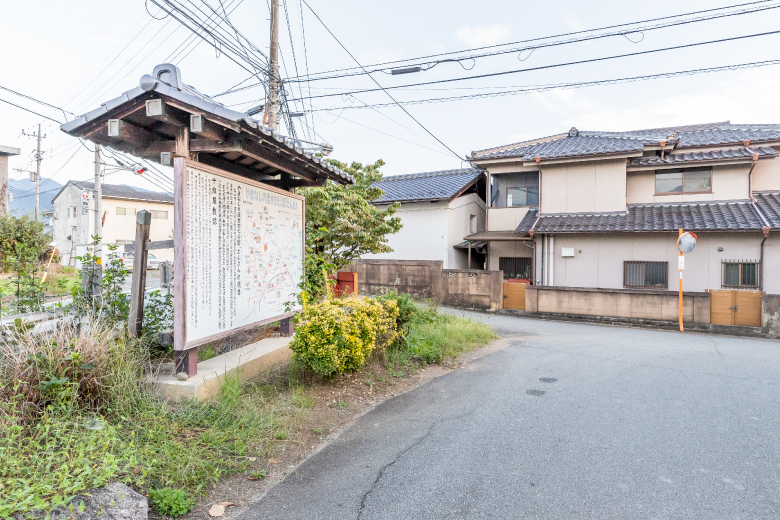In 1633, Itami Yasukatsu, who was appointed as guard of Kofu-jo Castle, re-organized the 19 villages he received spreading over an area worth 8000 goku (goku = unit of value referring to the volume of rice that could be harvested) into ten groups and took on the name Tokumi, which literally means “ten groups.” The name of Tokumi Clan was also written using the characters for virtue and beauty, also pronounced “tokumi.”
The Tokumi Clan’s residence in Mikkaichiba was called Tokumi Residence, but in 1698, it was confiscated and its role as a center of administration was abolished. The site is today a designated Historic Site of Koshu City.
Mikkaichiba is home to many parishioners of Erin-ji Temple, and retains the ancient townscape of historical buildings that surrounded the temple. During the Warring States Period (1467–1603), government buildings and storehouses were built near where the monument marking the site of Tokumi Residence stands today, and a market opened on the third day of the month every month. It is said that buyers gathered from around the country particularly to obtain the persimmons and chestnuts that were local specialties.
The Tokumi Clan’s residence in Mikkaichiba was called Tokumi Residence, but in 1698, it was confiscated and its role as a center of administration was abolished. The site is today a designated Historic Site of Koshu City.
Mikkaichiba is home to many parishioners of Erin-ji Temple, and retains the ancient townscape of historical buildings that surrounded the temple. During the Warring States Period (1467–1603), government buildings and storehouses were built near where the monument marking the site of Tokumi Residence stands today, and a market opened on the third day of the month every month. It is said that buyers gathered from around the country particularly to obtain the persimmons and chestnuts that were local specialties.
COURSE MAP
Let's go to the next spot!
- 5.4km / 9min by car
- 19Fumon-ji Temple

